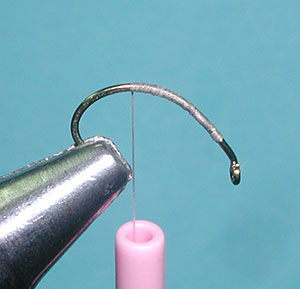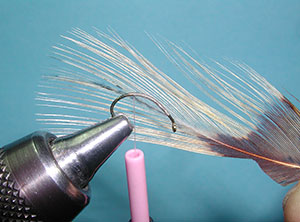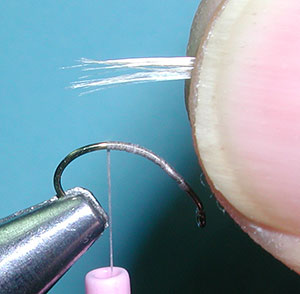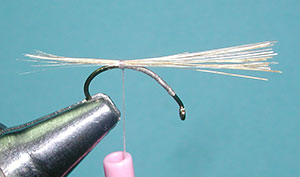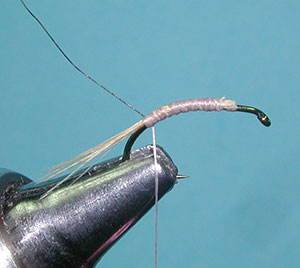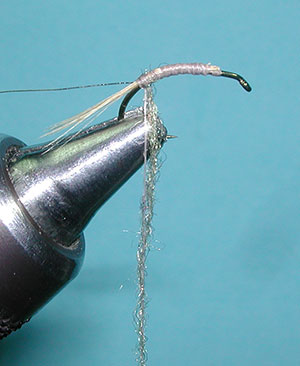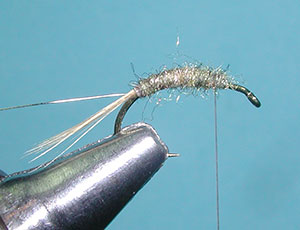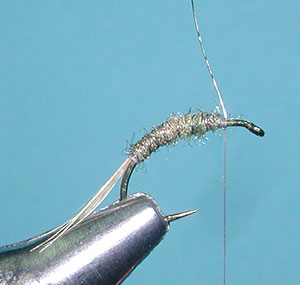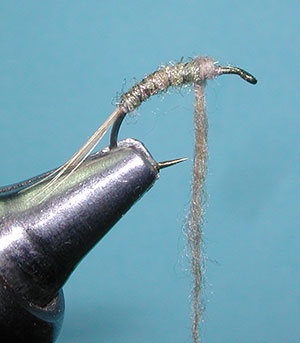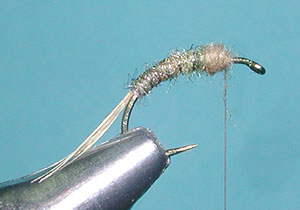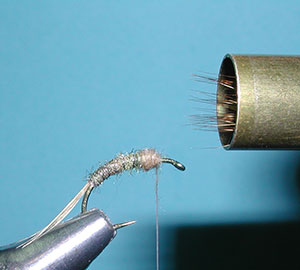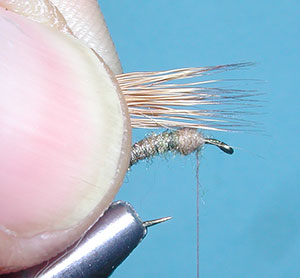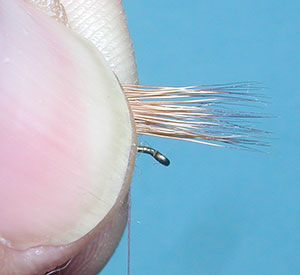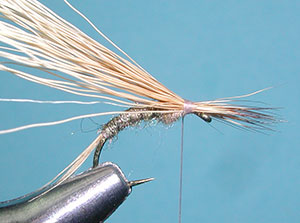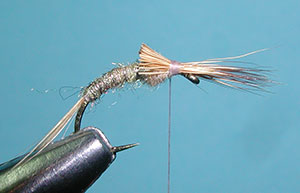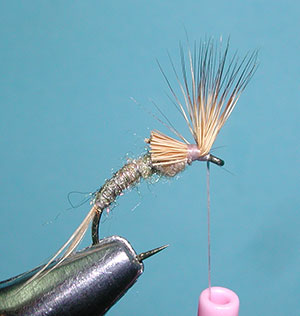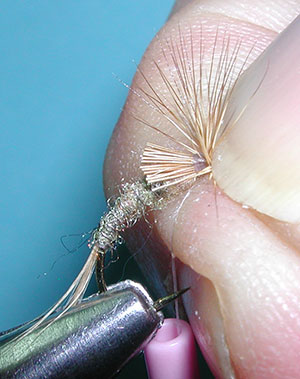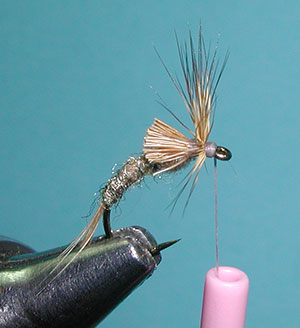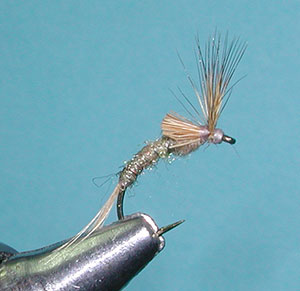Morris May Emerger – emerging from the dance
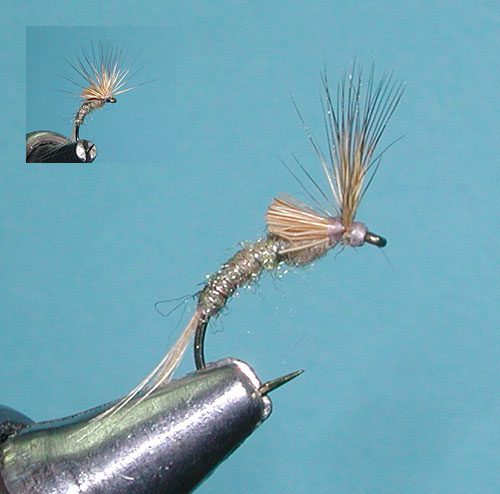
Morris May Emerger Callibaetis
Tying Instructions
| Materials
to Order Material, click the link |
|
|---|---|
| Hook | Daiichi 1130 #14-16 |
| Thread | Uni-thread Gray 8/0 |
| Body | Callibaetis Antron Dubbing |
| Thorax | Callibaetis Superfine Dubbing |
| Tail | Light Pardo Tailing fibers |
| Wing | Bleached Coastal Deer Hair |
| Ribbing | Small Silver Wire |
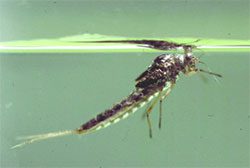

Skip Morris
Morris May Emerger
The Morris May Emerger is a hybrid pattern between the Comparadun and the Quigley Cripple. Skip featured this pattern in his book, “Trout Flies for Rivers” in 2009 but the pattern itself was designed much earlier. The important aspect that Skip was looking for was the orientation of the fly within the water column.
The comparadun sits level with the water surface while the Quigley Cripple sits at a 90 degree or perpendicular angle. Skip wanted a more natural 45 degree aspect to the fly. He got it by eliminating the hackle off the Quigley Cripple and flaring the deer hair wing so that it spreads like a comparadun.
Type of Hair is Important
It is important to use Coastal Deer Hair or Comparadun Hair to achieve the proper 180 degree flare required. The pattern is very buoyant, even without the hackle, but Skip will apply floatant to the trimmed hair butts. The pattern is tied on a light wire scud hook, often a TMC 2487 or a Daiichi 1130. The tailing can be either spade hackle fibers or pheasant tail fibers depending on the coloration of the pattern. The abdomen and thorax can also vary using either natural or synthetic materials. The pattern is defined by the wing construction. Morris May emergers are often fished as a dead drift and providing a subtle action with a slight twitch.
Mayfly Hatches
Fishing emergers can be quite productive in the film. During a mayfly hatch, the nymphs on the bottom of the streambed or lake will start to generate gases between their exoskeleton and body. Eventually, the nymphs have no choice but to float to the surface. The nymphs try to swim back down to no avail and this “dance” creates excitement for the trout. At the surface they hold just beneath the film with only the hump of the thorax breaking the meniscus.
Within moments the thorax splits and the adult emerges. The mayfly pulls its head and then its legs out of the husk of the exoskeleton. It sprawls the legs out across the water and, levering down against the surface tension, draws the wings and abdomen out of the shuck. Only the tail remains in the husk and then it too pulls free leaving the mayfly to drift across the surface of the lake as it hardens its wings.
Callibaetis
The Callibaetis pattern is a good choice on lakes where the hatch might occur in late Spring or early Fall. Look for hatches over submerged weed beds in sizes 14-16. During the early Spring, the coloration of the Callibaetis is a dark sooty gray but once waters warm up in early Fall the colorations will be lighter and with the dark wings, the insect has a speckled effect, thus also known as the Speckled Dun.
Trout will key upon the emergers rather than duns or nymphs since they are an easy meal waiting for them at the surface. On our rivers, the baetis or BWO, are often hatching from Fall through Spring. The sizes are drastically on the small side with sizes 18-22. The Pale Morning Duns are an important hatch on our rivers from late Spring into Fall with a size 16-18.
Western Green Drake
Finally, the Western Green Drake is a special hatch with large mayflies in the size of 10-12 during the Spring through Summer. Within our Sierra Nevada, the Green Drakes are generally within the Sierra Tahoe region, particularly the Truckee and Feather River systems. Green Drake nymphs are crawlers and thrive in large cobbled substrates with moderate to fast-paced currents.
Prior to emergence, mature nymphs migrate toward slower riffles and runs where their availability to the trout increases exponentially because they are poor swimmers. They frequently become victims of catastrophic drift and become hearty meals for opportunistic trout. Their emergence begins underwater, then the crumpled-up dun floats to the surface to dry its wings and take flight. Morris May Emerger patterns fished on the swing or near the surface are deadly for imitating these rising duns.
Variations
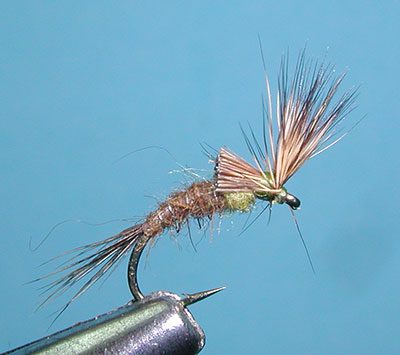
Morris May Emerger Baetis
| Hook | Daiichi 1130 #16-20 |
| Thread | Uni-thread Olive 8/0 |
| Body | Chocolate Brown Rabbit Dubbing |
| Thorax | Olive Superfine Dubbing |
| Tail | Partridge fibers |
| Wing | Natural Dark Coastal Deer Hair |
| Ribbing | Small Silver Wire |
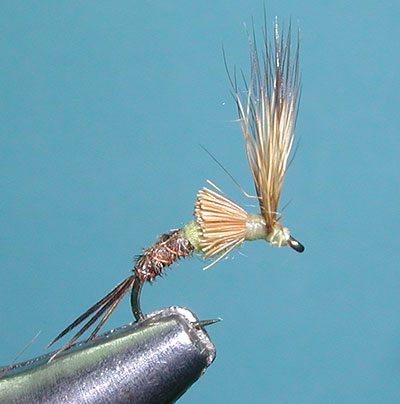
Morris May Emerger PMD
| Hook | Daiichi 1130 #14-18 |
| Thread | Uni-thread Pale Yellow 8/0 |
| Body | Pheasant Tail |
| Thorax | PMD Superfine Dubbing |
| Tail | Pheasant Tail fibers |
| Wing | Bleached Coastal Deer Hair |
| Ribbing | Small Copper Wire |

Morris May Emerger Green Drake
| Hook | Firehole 316 #10-12 |
| Thread | Uni-thread Green 8/0 |
| Body | 2 Olive and 1 Brown Ostrich Herl |
| Thorax | Olive Superfine Dubbing |
| Tail | Brown Hen Saddle |
| Wing | Natural Dark Coastal Deer Hair |
| Ribbing | Danville Yellow Flat-Waxed thread |


